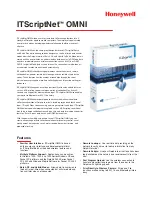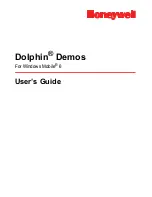
Defining Launch Entries
Launch-in-Context Feature
283
For example, the following URL is a URL for the Person application that
uses the PERSONNAME attribute.
https://extsyshost:9045/tcWebUI/interaction-
handler?actionId=viewPerson&Person={PERSONNAME}
You can also use an attribute from an object that is related to the main
business object by specifying the relationship name and the attribute
name
{relationshipname.attributename}
.
The following URL includes a city attribute from an address. Use this URL
in the Person application when the ADDRESS object is related to a
PERSON object with a relationship named ADDRESS.
https://extsyshost:9045/WebUI/interaction-
handler?actionId=viewCity&cityname={ADDRESS.CITY}
Use the
{sourcetoken}
and the
{reportinghostname}
values in your
URL when you want to launch to an operational management product
console that manages a configuration item.
T
The target browser window value.
The target browser window value identifies whether the window that you
want to open the external application in:
T
Launch entry business objects.
The business objects that you assign restrict the launch entry usage to
applications that support these objects. The restriction applies when you
associate a launch entry to a user interface control.
A launch entry can support single or multiple business objects. No
restrictions apply to the launch entry use when you do not select any
business objects.
T
Launch entry classification value attributes.
The classification value can restrict the displayed launch entries. Multiple
business objects support the classification attribute.
The classification restriction is implemented at run time when you use
system conditions. Out of box conditions are available to control your
launch entry behavior. You also can create your own conditions.
Browser Window
Value
The current browser window.
_usecurrent
A new browser window.
_blank
A named browser window.
The name of the window.
A new browser window is opened on the first
launch and then reuses the browser window
on subsequent launches where the name is the
same.
Summary of Contents for BJ0NJML - Service And Asset Management
Page 12: ...xii Integration Guide ...
Page 14: ...xiv Integration Guide ...
Page 16: ......
Page 31: ...Integration Framework for User Interface Integration Integration Framework Architecture 17 ...
Page 32: ...Integration Framework for User Interface Integration 18 Integration Guide ...
Page 60: ...Synchronous Inbound Integration Processing 46 Integration Guide ...
Page 122: ...Configuring External Systems 108 Integration Guide ...
Page 142: ...Non queue Error Management 128 Integration Guide ...
Page 154: ...Integration Components 140 Integration Guide ...
Page 156: ......
Page 172: ...Writing Custom Handlers 158 Integration Guide ...
Page 176: ...Queue Tables 162 Integration Guide ...
Page 190: ...IBM WebSphere MQ 176 Integration Guide ...
Page 212: ...Inbound Message Receipt 198 Integration Guide ...
Page 226: ...Integration Controls 212 Integration Guide ...
Page 252: ...Predefined External System Modifications 238 Integration Guide ...
Page 263: ...Web Service Queries Integration Queries 249 ...
Page 264: ...Web Service Queries 250 Integration Guide ...
Page 272: ...Integration Web Service Invocations 258 Integration Guide ...
Page 276: ...Multilanguage Attributes 262 Integration Guide ...
Page 293: ...Integration Module Invocation Integration Modules 279 ...
Page 294: ...Integration Module Invocation 280 Integration Guide ...
Page 302: ...Associating a Condition with a Signature Option 288 Integration Guide ...
Page 320: ...Work Order Collaboration Switches 306 Integration Guide ...
Page 324: ...310 Integration Guide ...
















































